

12 Things You Never Knew Your Smartphone Could Do
source link: https://www.slashgear.com/873749/12-things-you-never-knew-your-smartphone-could-do/
Go to the source link to view the article. You can view the picture content, updated content and better typesetting reading experience. If the link is broken, please click the button below to view the snapshot at that time.

12 Things You Never Knew Your Smartphone Could Do
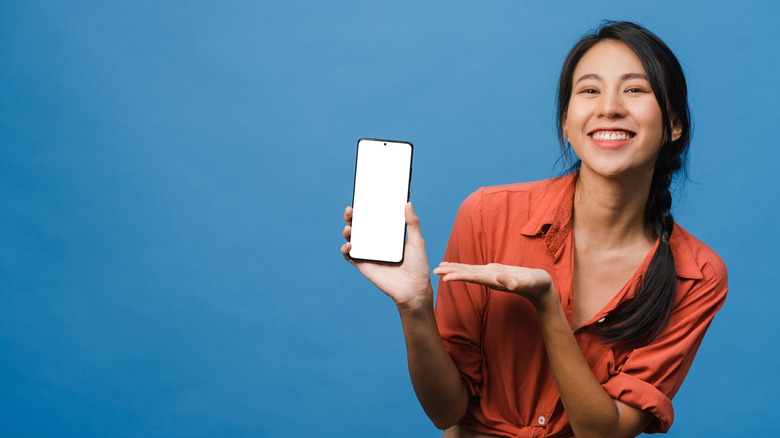
For many, it's a ritual to wake up, grab your phone, and open Instagram. You start scrolling an endless feed, only to realize a while after that you need to get on with your day. But your smartphone can do more than just calling, messaging, and scrolling through social media, much of which is quite productive.
Modern phones are capable of doing things like controlling the gadgets in your smart home, for example. But even if you don't have a smart home, you can do plenty of cool things with a smartphone.
Some of those cool things are built into your phone out of the box. Other things require installing an app from the App Store or the Play Store. Give the compulsive social media scrolling a break and use your smartphone for something more productive or innovative.
In this guide, we cover 12 things you didn't know you could do with your smartphone.
Create cool looping videos
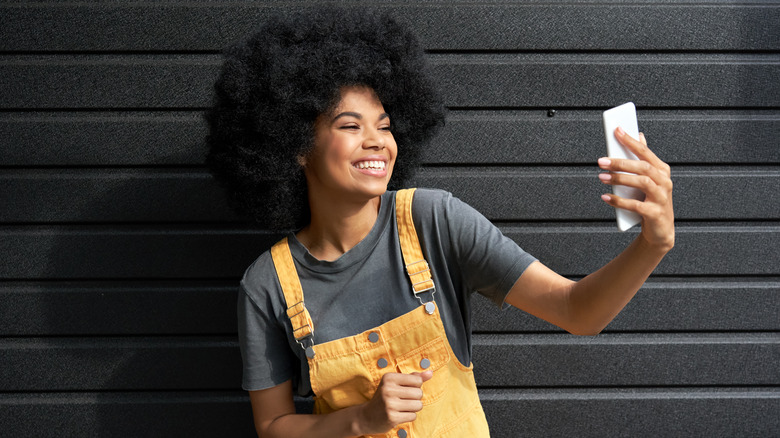
You've probably edited videos on your phone before. There are tons of apps out there and you can also create cool stuff with Instagram's boomerang. But did you know you can create cool looping videos with the Clips app if you use an iPhone?
These aren't your basic run-of-the-mill looping videos. Here's how to make it happen:
Start by recording a simple loop video and import it into the Clips app. Next, trim the beginning and end of the video so it loops by itself. Then, add more clips with the same movement. Finally, change an unexpected element of your video (for instance, scale or change an object).
If you need some help with editing, Apple has a tutorial for editing videos on the Clips app. Once you've created your video, you can directly post it on social media, share it with a friend, or save it on your device.
Control your car
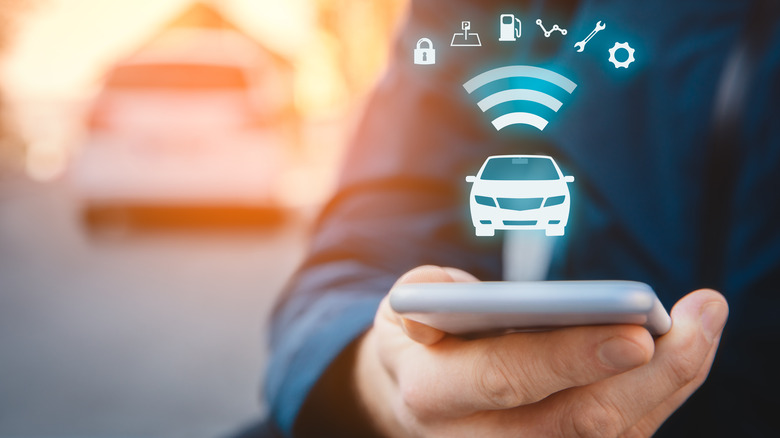
Ever had to drive a car parked for hours under the sun? The first few minutes are excruciatingly hot even with the AC turned on. Wouldn't it be awesome if you could cool down the car before you start driving?
You can do that, and a lot more, with Viper SmartStart. It essentially converts your smartphone into your vehicle's remote control. Installing the complete system allows you to unlock and start the car, open the trunk, find your car's location, and activate its security system, among other things. With Viper SmartStart installed, you'll have the option to prepare the car for a comfortable experience before you use it.
The app is available for both Android and iOS for free, but you'll need to invest in hardware and pay Viper's monthly service fee to use the system. The total cost of installing the system will also vary from installer to installer since it's not a DIY system.
Use your phone as a tape measure
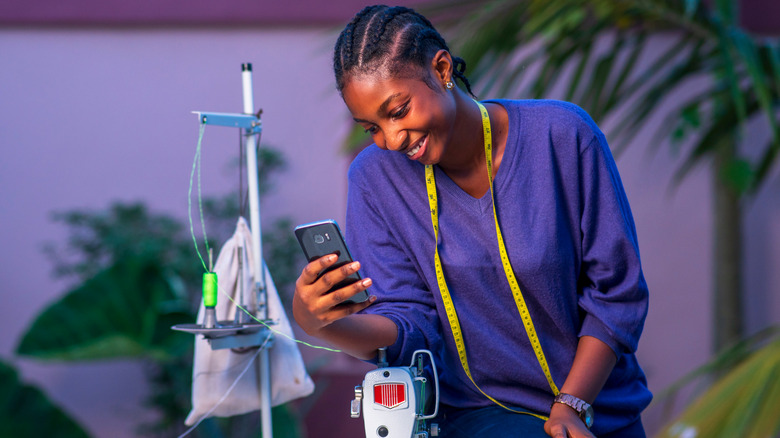
Need to measure the length of an object, but don't have your tape measure handy? There's little to worry about when you have a smartphone. There are several mobile apps that can help you measure the length of an object by using the phone's camera.
For instance, you can use the Measure app on the iPhone to measure an object's length. The app uses augmented reality (AR) to calculate the object's dimensions. To use the Measure app:
Start by launching the app. Point your phone's camera towards an object. Keep adjusting the camera's angle until you see a white circle with a dot at its center. Then, bBring the dot over the starting point of the object. This is where it will start measuring from.
Next, press the Add (+) button. Move the phone across the object until the dot is on the other end of the object. Press the Add (+) button again when the circle is over the point where you want to end the measurement.
Display the directions on the windshield
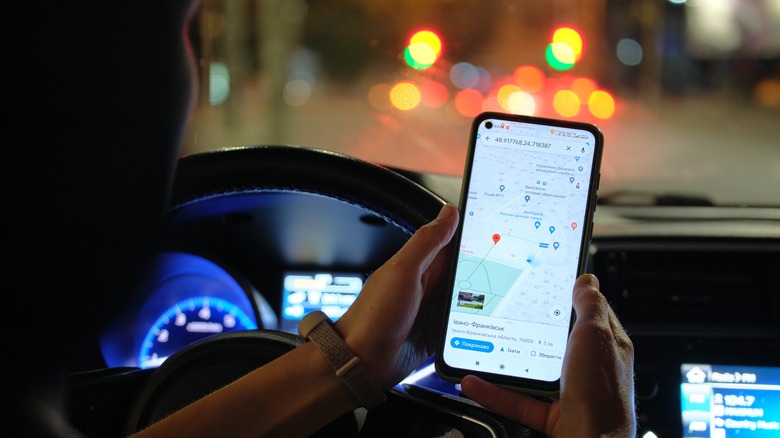
Have you ever driven when it's foggy or raining heavily? It's hard to see what's on the road. You want to drive as slowly and carefully as you can to avoid missing a turn and driving your car off the road. The good thing is that your smartphone can help.
You can use the Hudway app to display the directions on your windshield. Download the app on your Android or iOS device, enter the destination and let Hudway pull the correct directions. Place the phone on your car's dashboard so it can project the map onto the windshield.
Note that you should mount the phone properly so it doesn't fall off the dashboard. Also, place it appropriately so it doesn't keep you from seeing the road clearly. The app uses your phone's GPS, which means it will consume more battery, so be sure to keep your charger handy in case you need it.
Use your phone as a metal detector
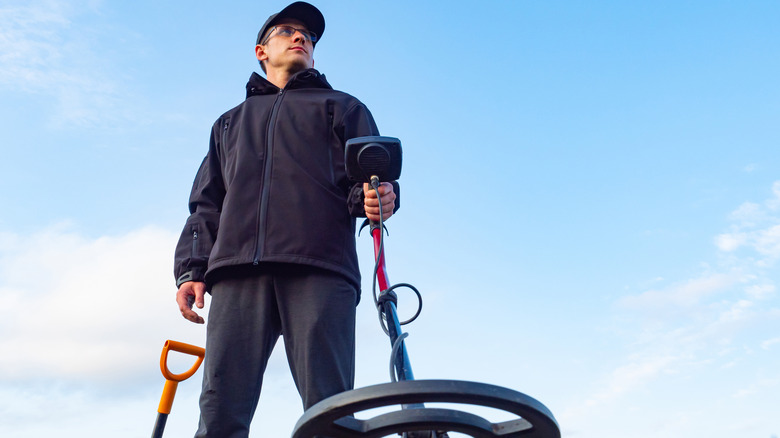
No, you can't use your phone for treasure hunting. However, if you've lost a piece of jewelry or want to find a needle that rolled off your hand, you can use your smartphone as a metal detector.
You'll find a ton of metal detector apps on the Google Play Store and App Store. The apps are free, though not ad-free. Download one of those to your Android or iOS device and start your metal search by moving your phone around.
The app will use a built-in magnetometer to find metallic objects as you move your device, and notify you when it finds a metal object.
Note that there might also be other metallic objects in the area and electronic items like TV and refrigerator. These objects may get in the way when you're using a metal detecting app. The results are usually not completely reliable and depend on your phone's magnetic sensor, but they're helpful nonetheless.
Measure blood alcohol content

Wonder if you're ok to drive? Well, your smartphone can help you verify this before you get behind the wheels and save you from a DUI and potential accidents. You can use your smartphone as a breathalyzer by installing an app like BACtrack on your Android and iOS device.
Of course, you also need an actual breathalyzer from BACtrack that connects with your phone and syncs with the app. Once those are connected, you'll be able to blow into the device and check the app to look at your current blood alcohol content. With BACtrack, you'll always know if it's best to use a cab or you're good to drive without putting yourself and anybody else's lives at risk.
Note that you should wait at least 15 minutes after your first drink to check your blood alcohol content and it might continue to rise until one hour after your last drink (per WebMD).
Use your smartphone as a remote
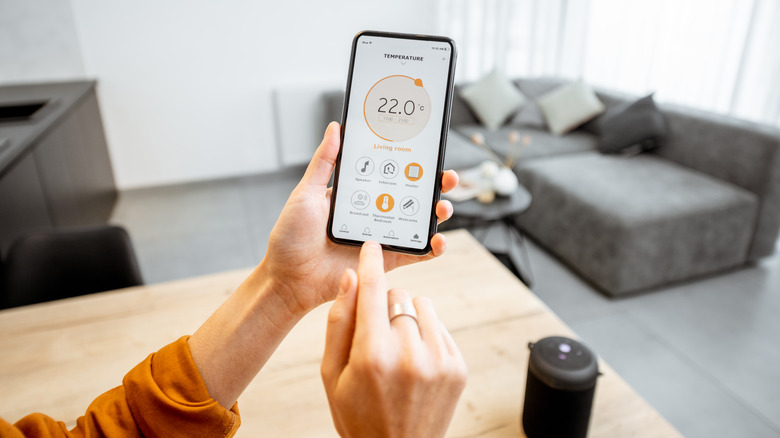
Lost your remote again? Guess what? You don't need to find it if you have a smartphone. You can install an app, or use a built-in function if your phone has it, to control electronic devices like TV, AC, DVD player, and projector, among others.
Newer iPhones and Android TVs typically have built-in controls for Apple TV and Google TV, respectively. However, you can download an app like ASmart Remote IR (Android) or EzRemote Lite (iOS) and use your phone as a remote control for almost any household device. You can also use the manufacturer's app in some cases.
These apps usually rely on your phone's IR blaster, but there are other ways to use your smartphone as a remote if your phone doesn't have an IR blaster. For instance, you can use the Google TV app to control an Android TV. The app syncs with the Android TV and uses WiFi, so it works even without an IR blaster.
Digitize old negatives
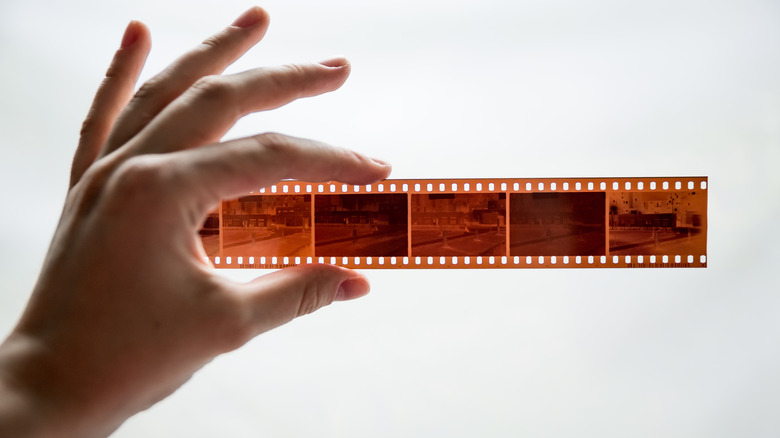
Found some old film negatives while cleaning the house? How about digitizing them real quick using your smartphone? Since most photos exist only as a digital copy now, it makes sense to scan these negatives and store them as digital files instead of converting them into a physical photo album.
You don't need a film and slide scanner to scan negatives. You can scan negatives with your smartphone by clicking a picture of the negative and scanning it with one of the negative scanner apps available on the Play Store or App Store.
You can use apps like Photo Negative Scanner (Android) and FilmBox (iOS) to quickly capture negatives and turn them into high-quality pictures. The apps use a scanning algorithm to automatically invert colors and improve image quality to produce excellent quality pictures. Once you've digitized these pictures, you can export them to your device and share it with friends and family. You can also convert them into an album using an app like Google Photos.
Stop sharing data with apps you no longer use
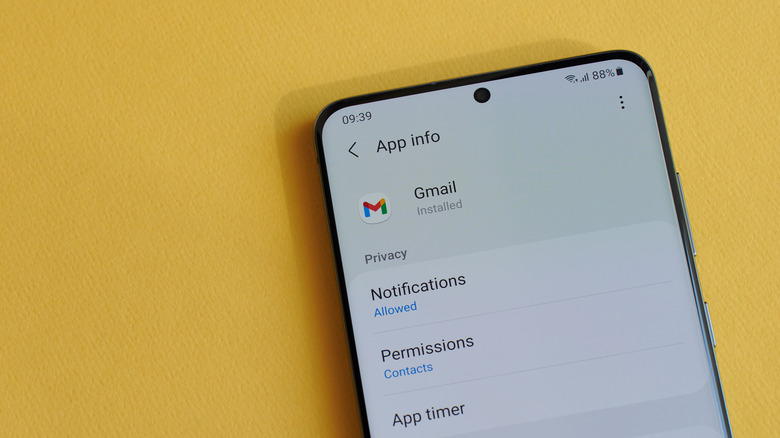
If you're like most people, you have a few unused apps installed on your phone. Even though you're not using them, they can still access data on your phone. For instance, if you installed a dating app last year, but have since found someone, it makes sense to revoke the app's access to your data.
There's an easy way to stop these apps from collecting your data on Android. Android's permission auto-reset option periodically cleans up permissions from unused apps. You'll receive a notification each time the permissions are reset. If you wish to continue allowing access to data to a certain app, you can always go back and change the permissions.
You can also review app permissions in iOS by going into Settings > Privacy. You can select individual apps and grant or revoke access to data based on your preference. There's no auto-reset option for permissions granted to unused apps on iOS, though, so you'll need to make these changes manually.
Split screen
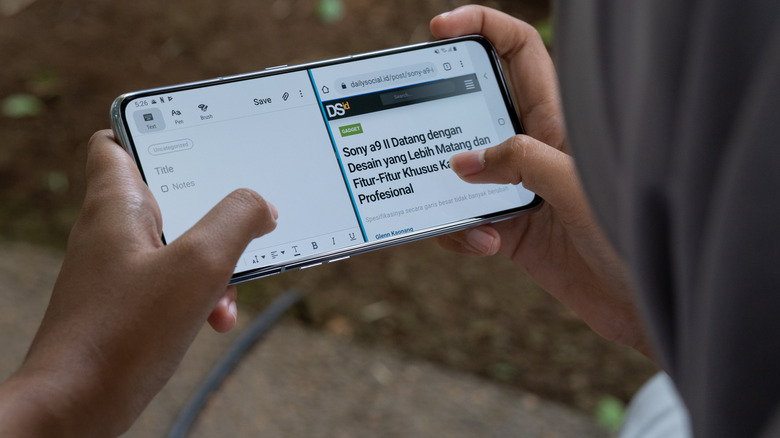
Splitting your screen is an excellent way to multitask. It's always been easy to split screens on your laptop, but did you know you could split your smartphone's screen too? Both Android and iOS devices let you split screens. The option is built-in on Android so you don't need to install any third-party apps, but you'll need a third-party app on iPhone.
Here's how you can split the screen on stock Android or Samsung devices:
Launch both apps you want to use after splitting the screen. Then, tap the recent apps button from the bottom of your screen. Find the app you want to use in split screen and hold-press the app's icon at the top. Next, select "Split Screen". Finally, select the other app you'd like to use after splitting the screen.
iPads do have a built-in split screen option, but on iPhone you can use an app like Split Screen View to multitask.
Use smart lock
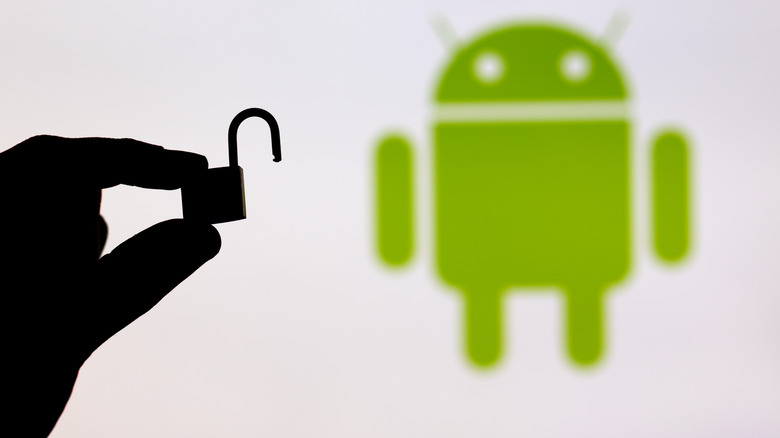
Android Smart Lock solves one of the most annoying parts of smartphone security — having to unlock the phone every time you want to use it. Instead, Smart Lock offers conditional security. It doesn't lock the phone at specific times as per your preference, and locks it otherwise.
For instance, you can set the Smart Lock such that the phone will remain unlocked as long as it's in a certain place (such as your home). Similarly, you can also keep the phone unlocked when it's on your body or connected to a trusted device.
You can enable Smart Lock on Android 5.0 Lollipop and later by going to Settings > Security > Advanced > Trust agents. Your phone may house Smart Lock in a different place, but you should be able to find it by searching for "Smart Lock" in Settings.
Once you've set up Smart Lock, you don't need to worry about repeatedly inserting the security pin or pattern every time you want to unlock your phone.
Use notification history
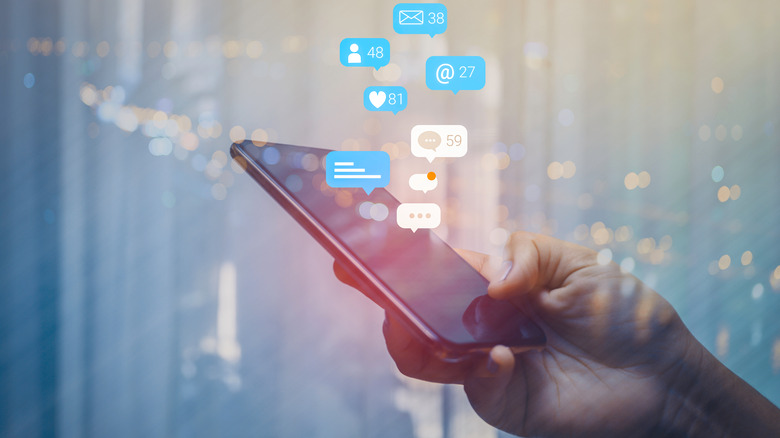
How many times have you read a message from a friend from the notification panel and decided to leave the notification untouched as a reminder for replying to them? If you do this too, you're probably careful about not clearing the notifications panel because it means your reminders are gone. It's even worse if you forget to respond to your boss because you cleared your notifications.
However, there's an easy solution. You can enable notifications history on your Android smartphone. Doing this will create a log of notifications that you'll be able to access even if you inadvertently clear all the notifications.
Enabling notification history is fairly straightforward. Here's how you can do it on Android 12:
Go to Settings > Notifications > Notification history. Then, toggle the button on for the "Use notification history" option.
Once you've done this, you'll see a log of subsequent notifications in a section under the "Use notification history" option.
The Best Smartphones Of 2021 Ranked
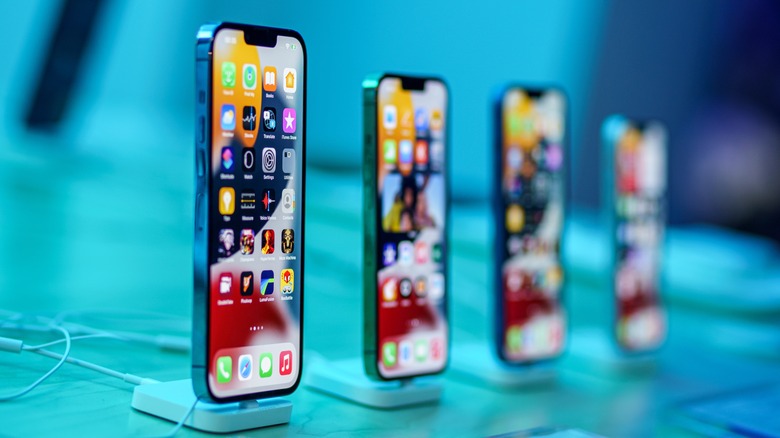
The smartphone market has someone for everyone, whether you're looking for a budget device that doesn't compromise on features or a flagship model sporting the latest and greatest hardware. Despite chip shortages, shipping delays, and production bottlenecks, manufacturers still managed to deliver an assortment of new handsets in 2021, including these top-of-the-line models.
1. iPhone 13
Love it or hate it, Apple makes great products. Samsung was a strong competitor this year, launching high-end smartphones of both the folding and non-folding variety, but the company still hasn't managed to outdo Apple at what Apple does best: offer a tightly integrated, cohesive, and highly useable ecosystem that seamlessly blends its own hardware, software, and services.
Buying an iPhone is more than just selecting iOS as your mobile operating system of choice. The handset works seamlessly with the Apple Watch, which itself still trumps anything you can get sporting Wear OS. In the same way, the iPhone works well with the iPad — which, again, exceeds any other tablet you can get for the simple reason that Android is entirely lacking on slates.
You don't have to buy into the wider Apple ecosystem to get the iPhone, of course, and it's possible the iPhone lacks a key feature you can't live without, whether that's a microSD card slot, built-in stylus, or 3.5mm audio jack. If you're content with a phone that doesn't include those finer trimmings, however, the iPhone 13 is worth serious consideration if you're looking for a high-end upgrade.
The iPhone 13 line is comprised of the iPhone 13 mini, iPhone 13, iPhone 13 Pro, and iPhone 13 Pro Max. These models range in size from 5.4-inches to 6.7-inches, with the best features being found in the two Pro options.
The iPhone 13 Pro packs a Super Retina XDR screen with ProMotion and Ceramic Shield, an IP68 water resistance rating, Apple's A15 Bionic chip, 5G support (including mmWave), ultra-wideband for using things like digital keys, Bluetooth 5, WiFi 6, and gigabit LTE.
Apple put a lot of focus on the cameras and related software with the iPhone 13 Pro. In terms of hardware, buyers get a "Pro" 12-megapixel camera system that includes wide, ultra-wide, and telephoto cameras. That is joined by the 12-megapixel TrueDepth camera on the front of the handset, which also powers the Face ID feature.
These cameras are joined by a variety of software features, including Apple's new "Cinematic mode" for recording movie-like videos. This new mode includes support for the TrueDepth, wide, and telephoto cameras, as well as Dolby Vision HDR.
The iPhone 13 Pro's camera features also include 6x optical zoom, 3x optical zoom for the telephoto lens specifically, support for macro video recording, improved low-light performance, "Photography Styles," and what Apple describes as an end-to-end workflow directly on the phone that includes editing in ProRes and Dolby Vision.
Not interested in Apple products? Fortunately, several excellent Android alternatives were released this year.
2. Galaxy S21
Samsung's Galaxy line has been around for years and there's a reason it has remained so popular. The latest and greatest installment in the series, the Galaxy S21, offers a huge number of features, but at a price not all consumers are willing to embrace. If cost isn't an issue for you, check out the Galaxy S21 Ultra 5G, the top model in the new line.
The Galaxy S21 Ultra 5G has a huge 6.8-inch Quad HD+ Dynamic AMOLED 2X Infinity-O display with 3200 x 1400 pixel resolution, giving it a pixel density of 515ppi (pixels per inch). Notable features include HDR10+ certification, a 120Hz refresh rate, a 40-megapixel "hole-punch" selfie camera, four rear cameras (10-megapixel telephoto F2.4 and F4.9 units, 108-megapixel wide-angle, and 12-megapixel ultra-wide), as well as a pressure-sensitive S Pen.
In addition to the LTE and 5G connectivity, the model also supports up to 2.4Gbps download speeds, offers Bluetooth 5.2, and includes ultra wideband (UWB) support for digital keys. The model is powered by the Snapdragon 888 alongside 12GB RAM and 512GB internal data storage.
The S21 Ultra packs a bunch of hardware capabilities and software features targeting what consumers are often most interested in. This model's camera features are particularly notable with things like 100x "space zoom," a 40-megapixel camera combined with software that produces what Samsung claims are "studio-quality portraits," and support for shooting videos in 8K resolution.
The S Pen inclusion takes the S21 Ultra to the next level with tablet-like functionality, making it easier to handle a wide variety of advanced features – like editing videos and photos directly on the device. This is the first Galaxy model to pack a 5nm processor, enabling faster performance — including when it comes to AI-powered features — compared to previous models.
The 5000mAh battery combined with some efficiency features gives users a runtime beyond a full day (though it largely depends on how the device is used), plus there are convenience features like wireless PowerShare for charging, for example, a pair of true wireless earbuds with wireless charging support.
The powerful hardware, sophisticated software, and well-rounded array of features make the S21 Ultra one of the top smartphones on the market right now, though its price will be the biggest issue for many consumers. The Galaxy S21 5G (the one with the 6.2-inch display) starts at $799.99, but making the jump to the Ultra 5G model pushes the starting price to $1,200. There are some ways to reduce the price, including trading in certain devices for a substantial discount, but the final price will still likely be substantial.
3. Pixel 6
Though Google's Pixel has never managed to grab a significant share of the smartphone market, the company continues to update the line, arguably using its own hardware as a way to showcase Android in its purest form.
The Pixel 6 was released this year as the latest major installment in the smartphone family, bringing key features like Google's Tensor chip, the Titan M2 security chip with five years of updates, two rear camera, and what Google calls an adaptive battery that optimizes energy use so consumers can go longer between charging sessions.
Google historically offered a single camera with its Pixel smartphones, electing to enhance its mobile camera capabilities with software. This is known as computational photography, which utilizes artificial intelligence and software to improve the raw image data captured with the Pixel's camera. It was inevitable that Google would eventually increase the number of cameras included on its handsets, however, and the Pixel 5 marked the first time a model in this line was released with a dual-camera system. The Pixel 6 continues this trend with its own dual-camera array.
The Pixel 6 packs larger camera sensors compared to the previous model, which, among other things, enables the phone to gather 150-percent more light for brighter, higher-quality images in lower-light environments. This latest flagship model includes an ultra-wide lens for capturing larger scenes.
The software magic remains, including some features that would otherwise require you to fire up Photoshop. Magic Eraser is one excellent example: it resides on Google Photos and works by removing unwanted objects and people from images. Portrait Mode offers a blurred background for higher-quality selfies, plus there's Motion Mode for more dynamic action shots in environments with a lot of movement.
The model packs other notable features, including support for 5G networks, real-time language translations integrated into things like chat and podcast captions, an IP68 rating against dust and water exposure, and a high refresh rate for what Google calls "Smooth Display." Though you won't get a stylus like the one offered with the S21 Ultra, the Pixel 6 comes with some of its own perks, the best being its regular software updates known as feature drops.
Adding to the appeal is the somewhat lower price tag accompanying the Pixel 6; an unlocked version of the device with 128GB starts at $599, while the 256GB model starts at $699, making it a more economical choice for consumers who want high-end features and a bunch of storage space while staying well below a $1,000 price point.
4. Galaxy Z Flip 3
Many consumers aren't ready to embrace the foldable evolution yet, but this year brought a couple of excellent options for those who can't wait any longer. Samsung's Galaxy Z Flip 3 is the latest installment in the company's foldable product lines; this is the version that folds like an old-school clamshell flip phone, not to be confused with the book-style Galaxy Z Fold 3.
The Galaxy Z Flip 3 beats out the Z Fold 3 on this list for one simple reason: it is cheaper and, with the right trade-in device, the price can be dropped down to a very comfortable $325 or so. The model's defining feature is its flexible display, enabling the smartphone to fold in half horizontally across the body.
When unfolded, the Galaxy Z Flip 3 has a 6.7-inch screen; the device looks like a long, ordinary high-end smartphone. When folded, however, the length drops to just over 3-inches with a width a bit over half an inch. The screen packs a Full HD+ (2640 x 1080) Dynamic AMOLED panel with Infinity Flex Display, a 22:9 aspect ratio, 120Hz adaptive refresh rate, and 425ppi.
This main display is joined by a small 1.9-inch Super AMOLED screen on the rear of the device that shows basic details when the phone is folded. This rear display has a 260 x 512 resolution. The model packs many features you'd expect in a flagship model, including a 10-megapixel front-facing camera, while the rear camera array includes two 12-megapixel ultra-wide cameras, one with optical image stabilization, dual pixel autofocus, 78-degree field of view, and an F1.8 aperture. The other ultra-wide camera has an F2.2 aperture and a much wider 123-degree field of view.
The unique form factor aside, the Galaxy Z Flip 3 brings many of the same features you'd get on Samsung's other flagship handsets, including wireless charging, fast charging support, 5G connectivity, nano-SIM and eSIM, stereo speakers, and an array of sensors (accelerometer, proximity, etcetera). Other notable offerings include a 5nm processor, 8GB of RAM, up to 256GB of storage, Bluetooth 5.1, USB-C connectivity, a 3300mAh battery, and support for recording up to 4K videos.
5. OnePlus 9
This year brought the latest and arguably greatest OnePlus flagship, the OnePlus 9. Note that we're talking specifically about the US version of this phone; the model is available in other markets, as well, and its exact features may vary a bit depending on where it is purchased.
The OnePlus 9 features a 6.55-inch Fluid AMOLED display with a 120Hz refresh rate, 20:9 aspect ratio, and 2400 x 1080 resolution. The handset is powered by the Snapdragon 888 and it runs OnePlus's OxygenOS based on Android 11. Storage and memory are notable at 128GB/8GB, while the battery is on the large end of the spectrum with a 4500mAh capacity (fast charging is supported).
The handset packs a main 48-megapixel camera with a Sony IMX689 sensor and an F1.8 aperture lens; this is joined by an ultra-wide 50-megapixel model sporting the Sony IMX766 sensor and an F2.2 aperture lens. Interestingly enough, OnePlus also includes a 2-megapixel monochrome camera, which is a relative rarity among smartphones (Huawei included something similar with its P20 Pro and P10 models).
The camera features are extensive, including support for recording in 4K at 60fps and 8K at 30fps, plus there's slow-motion at up to 480fps, support for capturing time-lapses in 4K resolution, and there's a dual-LED flash. The front camera, meanwhile, skews toward an average offering at 16-megapixels with electronic image stabilization, fixed focus, and an F2.4 aperture.
Consumers looking for a bit more can check out the OnePlus 9 Pro variant, which boosts the features with a similar uptick in price. This model packs a more notable 6.7-inch Fluid AMOLED display with LTPO, 120Hz refresh rate, 3216 x 1440 resolution, 20.1:9 aspect ratio, and 10-bit color depth.
The model is likewise powered by a Snapdragon 888 alongside an X60 chipset for 5G connectivity. Storage and memory are higher at 256GB/12GB, respectively, while the battery sits at 4500mAh with fast charging support and 50W wireless charging.
The cameras are likewise upgraded with a 48-megapixel main camera packing optical image stabilization and an F1.8 aperture, a 50-megapixel ultra-wide camera with a freeform lens, an 8-megapixel telephoto camera with optical image stabilization, and the same 2-megapixel monochrome camera found on the non-Pro version.
The OnePlus 9 Pro is the one you'll want to consider if you're looking to upgrade to a model you'll keep for a while. The price is high at $1,069, though OnePlus currently lists the model at a discounted $849. Consumers in the US have two options: an unlocked model they can take to their favorite carrier or a T-Mobile version that runs on the provider's network.
6. Galaxy Z Fold 3
One of the most interesting Android smartphones released this year is also the most expensive: Samsung's massive book-style Galaxy Z Fold 3 foldable. This model has a 7.6-inch Infinite Flex Display, essentially making it a small tablet when unfolded; the screen is a more typical 6.2-inches when folded.
Given that the Z Fold 3 is essentially a hybrid device that sits between a smartphone and tablet, it's no surprise Samsung offers S Pen Pro and S Pen Fold accessories, enabling users to draw and write on the display the same way they would a Note device or a Samsung tablet.
The model packs an IPX8 water resistance rating, which means the device can handle exposure to water to depths of up to 5ft for up to half an hour. The latest Fold is powered by a Snapdragon 888 octa-core processor; it packs up to 512GB of storage and 12GB of memory, a 4,400mAh battery, and a 120Hz adaptive display refresh rate.
The camera array is notable with three units on the back: a 12-megapixel wide-angle, 12-megapixel ultra-wide-angle, and 12-megapixel telephoto cameras. The front, meanwhile, sports two cameras: a main 4-megapixel unit and a 10-megapixel front cover camera.
The camera loadout isn't as impressive as what you get with the S21 Ultra, but the device's main purpose resides in its unique form factor, not its photo capabilities. Samsung leverages the ultra-wide display by offering unique multi-tasking features, delivering what the company refers to as "PC-like productivity" — though, keep in mind that only some apps support the Flex mode.
The Galaxy Z Fold 3 is a productivity powerhouse, targeting consumers who often do business and get work done directly on their handsets. The tablet-like form factor enables users to leave their dedicated tablets at home, instead unfolding their smartphone to markup documents, sign paperwork, edit videos, and other tasks that are more difficult on smaller traditional form factors.
There's one huge downside to this model, however, and that is its astronomical price tag. With a starting price of $1,900 unlocked, that makes the phone more expensive than many nice ultrabook laptops and, for example, the 12.9" iPad Pro with 1TB of storage.
Consumers are very much paying for the novelty of having a large folding smartphone, one that, while still excellent, isn't going to stand up against something like an M1 iPad Pro when it comes to performance, app variety, and the user interface. For this reason, buyers should be mindful of what they truly need out of a mobile device and whether the Galaxy Z Fold 3 is able to meet those needs.
If you decide to pick up a model, keep in mind that Samsung will drop the price to $849 USD with certain trade-ins, plus it includes the Galaxy Buds 2 for free with the purchase (if you buy the device directly from Samsung's website, at least).
7. Huawei P50 Pro
Last but not least is the Huawei P50 Pro, a high-end smartphone the company released this year with one massive problem: it doesn't run Android. This may be a dealbreaker for many consumers, but if you don't mind being limited to Huawei's HarmonyOS, there's a lot to like about this flagship model.
The Huawei P50 Pro sports a 6.6-inch OLED display with a 120Hz refresh rate and 2700 x 1228 resolution. The model is powered by the Snapdragon 888 4G alongside Adreno 660 graphics; there's 8GB/256GB memory and storage, respectively, as well as a 4360mAh battery with fast and wireless charging support.
Huawei focused extensively on the P50 Pro's camera array with four units on the back: a 50-megapixel "True-Chroma" module packing optical image stabilization, a 40-megapixel True-Chroma F1.6 module, a 13-megapixel ultra-wide-angle F2.2 module, and a 64-megapixel telephoto camera with optical image stabilization, autofocus, and F3.5 aperture. The cameras include phase focus and contrast focus options, plus there's hybrid and digital zoom for those times when the optical zoom isn't enough.
The camera hardware is paired with a variety of software-based features, including an AI-powered "Cinemagraph" mode, 4K Predictive Focus, time-lapse shooting, audio zoom, macro and portrait modes, monochrome camera capture, Moving Picture, and more. The front-facing camera, meanwhile, includes a 13-megapixel wide-angle module combined with software features like smart eye tracking, panorama, AR lenses, and slow-motion selfie capture.
Other notable features include an IP68 rating, meaning the phone has a degree of resistance against dust and water, plus there's a dual-SIM version of the handset with 4G LTE support, Bluetooth 5.2, USB-C connectivity, NFC, GPS, and the typical array of sensors found on flagships (fingerprint, gravity, infrared, gyroscope, ambient light, etcetera).
Again, the big downside here is the P50 Pro's lack of Android and Google services; users are instead given access to Huawei's own HarmonyOS, which, while nice, comes with far fewer app options than the average consumer is used to. You may not be able to download your favorite apps, and that could be a big deal, particularly if you need certain unsupported apps for work. Speaking of work, depending on the industry, you may not be allowed to use a Huawei handset for business purposes due to security rules.
Given the P50 Pro's high price (around $1,200 USD, depending on configuration) and its many downsides, it's really not advisable for someone outside of China to purchase the model — there are alternatives like the S21 Ultra that come in around the same price point with many of the same or similar features, but with Android and Google services. With that said, the P50 Pro — from a hardware standpoint — is still one of the most notable flagships released in 2021.
Recommend
About Joyk
Aggregate valuable and interesting links.
Joyk means Joy of geeK